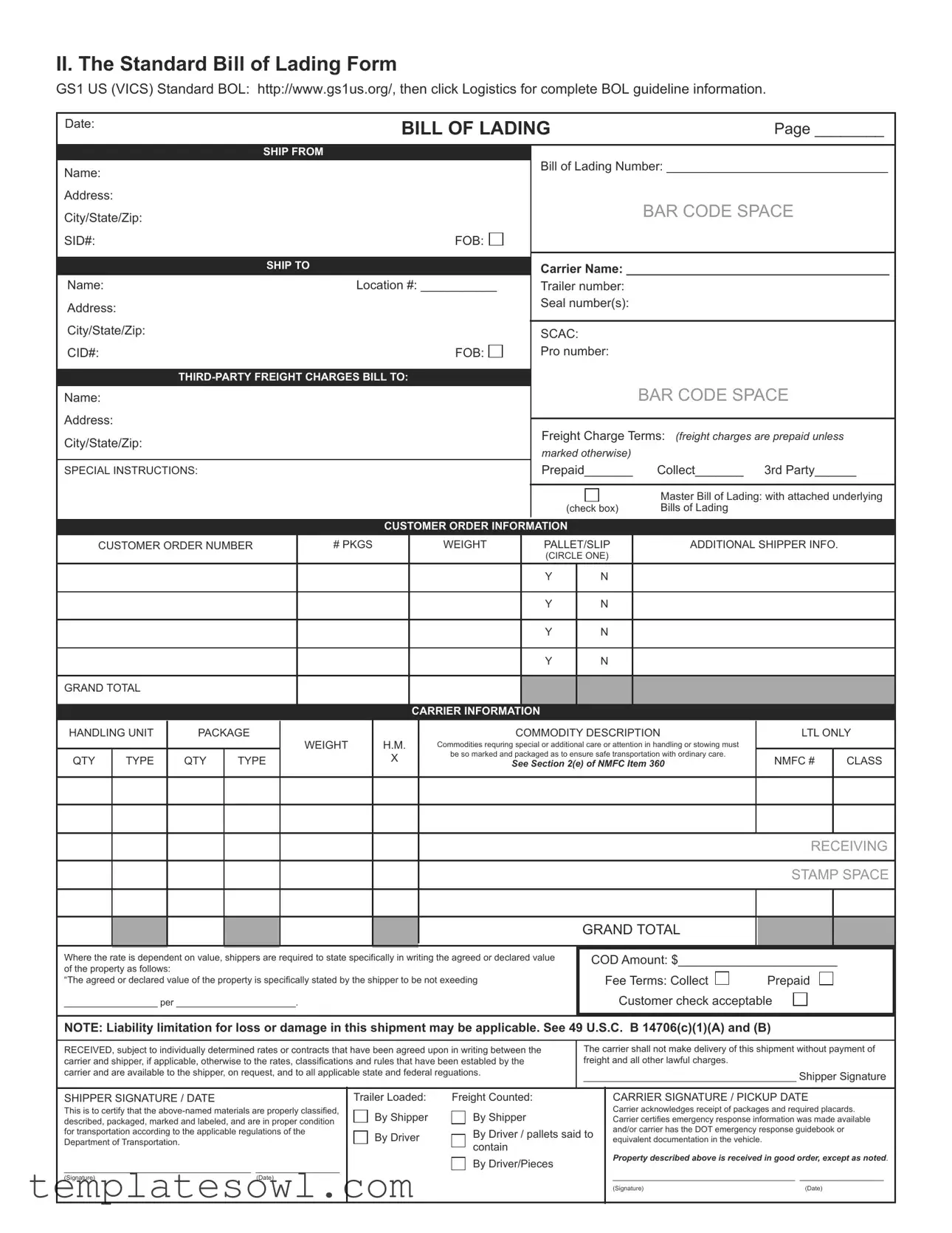What is a Vics Bill of Lading?
A Vics Bill of Lading is a document used in shipping that serves as a receipt for goods and a contract between the shipper and the carrier. It outlines the details of the shipment, including the type of goods, destination, and carrier information. This form is essential for tracking and tracing goods as they move through the supply chain.
How do I complete a Vics Bill of Lading?
To complete a Vics Bill of Lading, you will need to provide specific information about the shipment. This includes the shipper's and receiver's details, description of the goods, weight, and shipping instructions. Ensure accuracy, as mistakes can lead to delays or problems with delivery.
Who needs to sign the Vics Bill of Lading?
The Vics Bill of Lading must be signed by both the shipper and the carrier. The shipper’s signature indicates that the goods were handed over in good condition. The carrier's signature confirms acceptance of the goods for transport.
What is the difference between a straight bill and a Vics Bill of Lading?
A straight bill of lading is non-negotiable and means that the goods will only be delivered to the named consignee. In contrast, the Vics Bill of Lading can include options for transferring ownership while in transit, making it potentially negotiable.
Is a Vics Bill of Lading legally binding?
Yes, a Vics Bill of Lading is considered a legal document. It serves as evidence of the contract for the shipment and establishes the responsibilities and rights of all parties involved in the transportation of goods.
Can I get a copy of the Vics Bill of Lading after shipping?
Yes, you can request a copy of the Vics Bill of Lading after shipping. It is good practice to keep copies of shipping documents for your records. You may need this information for future reference or to resolve any shipping disputes.
What information will the Vics Bill of Lading contain?
The Vics Bill of Lading typically contains details such as the shipper's and consignee's names and addresses, a description of the goods, quantity, weight, freight charges, and shipping instructions. Sometimes, it may also include tracking numbers and any special handling requirements.
What should I do if my Vics Bill of Lading is lost?
If your Vics Bill of Lading is lost, contact the carrier immediately to report the loss. They may be able to issue a duplicate or provide guidance on how to proceed. It's important to act quickly to avoid delays in the delivery process.
How does the Vics Bill of Lading affect freight claims?
The Vics Bill of Lading is critical in handling freight claims. If there is damage or loss during transit, this document will help establish the condition of the goods at the time of shipping, which is vital for filing claims with the carrier.


